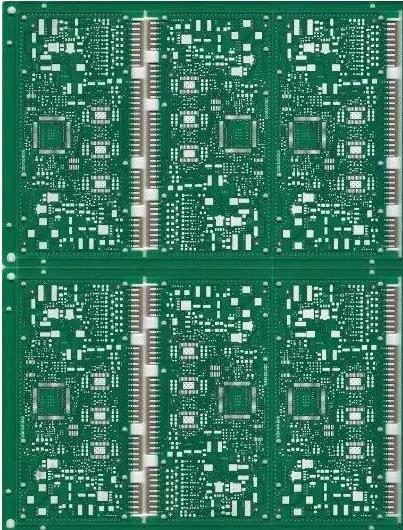Everybody knows that the impedance should be continuous. However, as said, "There are always several times in life when you step in shit", and there are always times when the impedance of PCB design can not be continuous. How to do?
If the transmission line is isotropic, there will always be a current I as long as the signal is being transmitted. If the output voltage of the signal is V, in the process of signal transmission, the transmission line will be equivalent to a resistance with a size of V/I. This equivalent resistance is called the characteristic impedance Z of the transmission line.
In the process of signal transmission, if the characteristic impedance changes along the transmission path, the signal will be reflected at the node of impedance discontinuity.
Factors affecting characteristic impedance include dielectric constant, dielectric thickness, line width and copper foil thickness.

[1] Gradient line
Some RF devices have small package, SMD pad width may be as small as 12mils, and RF signal line width may be more than 50mils, gradient line should be used, prohibit line width mutation. The gradient line is shown in the figure. The transition line should not be too long.
[2] Corner
RF signal line if the right Angle, the effective line width at the corner will increase, impedance discontinuous, causing signal reflection.
To minimize discontinuity, corners are treated in two ways: corner cutting and corner rounding. The radius of the arc Angle should be large enough, in general, to ensure that: R> 3 w. As shown on the right.
[3] Big pad
When there is a large pad on the 50 ohm microstrip line, the large pad acts as a distributed capacitance and destroys the continuity of the characteristic impedance of the microstrip line. The distributed capacitance of the pad can be reduced by both thickening the microstrip line medium and hollowing out the ground plane below the pad. The diagram below.
[4] Through hole
The through hole is a metal cylinder plated outside the through hole between the top and bottom layers of a circuit board. Signal holes connect transmission lines on different layers. Hole residue is the unused portion of the hole. Through-hole pads are round annular gaskets that connect the through-hole to the top or internal transmission line. Isolation disks are annular Spaces within each power supply or grounding zone to prevent short circuits to the power supply and grounding zone.
Parasitic parameters of the hole
After strict physical theoretical derivation and approximate analysis, the equivalent circuit model of the hole can be regarded as an inductor with a grounding capacitor connected in series at both ends, as shown in FIG. 1.
Equivalent circuit model of the hole
It can be seen from the equivalent circuit model that the parasitic capacitance to the ground exists in the through-hole itself. Assuming that the diameter of the through-hole reverse pad is D2, the diameter of the through-hole pad is D1, the thickness of the PCB board is T, and the dielectric constant of the substrate is ε, the parasitic capacitance of the through-hole is approximately as follows:
Parasitic capacitance through the hole can lead to prolonged signal rise time and slow transmission speed, thereby deteriorating signal quality. Similarly, through holes also have parasitic inductance, which is often more harmful than parasitic capacitance in high-speed digital PCBS.
Its parasitic series inductance will weaken the contribution of bypass capacitance and thus the filtering effectiveness of the entire power supply system. Suppose L is the inductance of the hole, h is the length of the hole, and D is the diameter of the central hole. The parasitic inductance size of the through-hole approximation is approximately:
Hole is one of the important factors causing impedance discontinuity in RF channel. If the signal frequency is greater than 1GHz, the effect of hole should be considered.
The common methods to reduce the discontinuity of the resistance through the hole include: using the disk-less process, choosing the outlet mode, optimizing the diameter of the back pad, etc. Optimizing the diameter of the back pad is a common method to reduce impedance discontinuity. It is recommended that HFSS and Optimetrics should be used for optimization simulation during each design because the hole characteristics are related to the structural dimensions such as aperture, pad, backpad, stacked structure and outlet mode.
When using parametric models, the modeling process is simple. At the time of review, the PCB designer is required to provide the corresponding simulation documentation.
The diameter of the hole, pad diameter, depth, and backpad can all vary, resulting in impedance discontinuity, reflection, and insertion loss severity.
[5] Through-hole coaxial connector
Similar to the through-hole configuration, the through-hole coaxial connector also has impedance discontinuity, so the solution is the same as the through-hole. The common methods to reduce the impedance discontinuity of the through-hole coaxial connector are also: using the diskless process, appropriate outlet mode, and optimizing the diameter of the back pad.